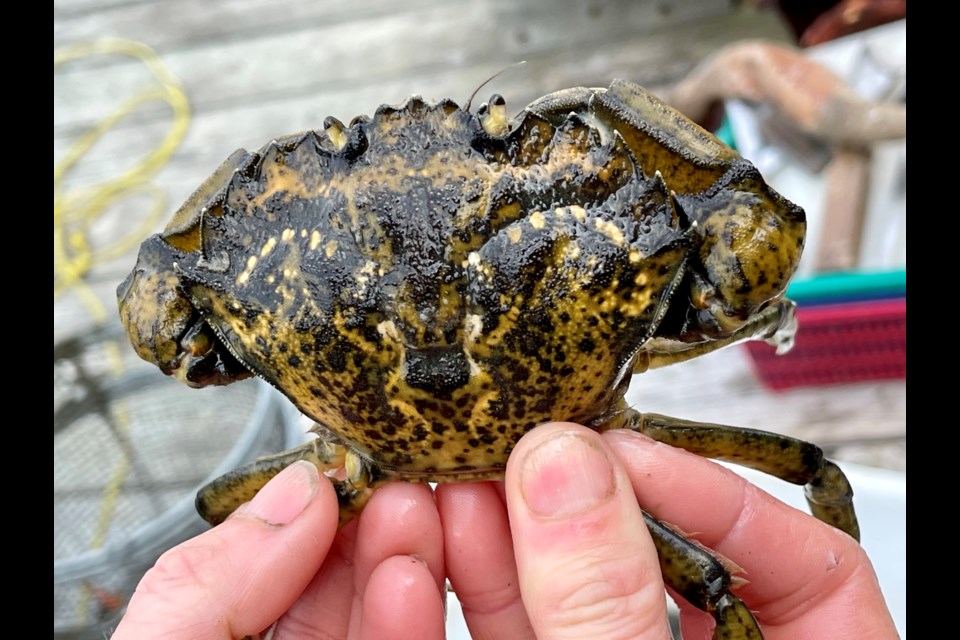Keep your eyes peeled for a "high-risk invader" if you are venturing in and around Howe Sound.
Conservationists are concerned about the invasive European green crab showing up in the fjord.
They also want to know if it is spotted in the ocean around Greater Vancouver and the Salish Sea.
As an invasive species, it can wreak havoc on the marine environment.
"This species has been demonstrated to destroy, disrupt and degrade eelgrass habitats through its foraging and burrowing activity, which our native crabs tend not to do to the same extent," said Tom Therriault, a research scientist with Fisheries and Oceans Canada.
"Eelgrass is incredibly important," he said, noting herring attach eggs to it during spawning.
And eelgrass is already under threat from climate change, among other stressors.
"The other thing is, like other invaders, when [green crab] populations get large, those impacts are then exacerbated... They're a disproportionate stressor on the ecosystem."
It also competes with native crabs for food and space, preying on native shellfish and other marine life.
Therriault added that the European green crab’s name can be deceiving because it isn’t always green.
"It predominantly is green, as implied by the name, but like other crustaceans, it does take on different colour morphs— brownish, reddish, purplish, yellowish. Colour is not the be-all and end-all characteristic," he said.
Here's how to identify the green crab:
- Its shell is serrated and pentagon-shaped
- It has five sharp spines on the side of each eye and three rounded lobes between the eyes
- Its back leg tips are: hairy, pointed and slightly flattened.
- It has different sized front claws
- It measures up to 10 centimetres
Therriault said the key identifier is likely the five spines.
"There's no other crab in B.C. that has five spines on either side of the eye. That's unique," he said.
According to Fisheries and Oceans Canada, the crab was brought from Europe and was first seen in Canada in New Brunswick in 1951.
It was transferred to San Francisco Bay in the late 1980s. And then it spread up the coast, Therriault said, through “larval dispersal on the current — like species do — and it got to B.C. on the west coast of the island in the late 1990s and has continued to spread north on current."
If you spot the European green crab, take a photo — put it back where you found it — and email the information about where you saw it and when to: [email protected].
Reports will help DFO understand the crab's distribution and could inform future management decisions.




